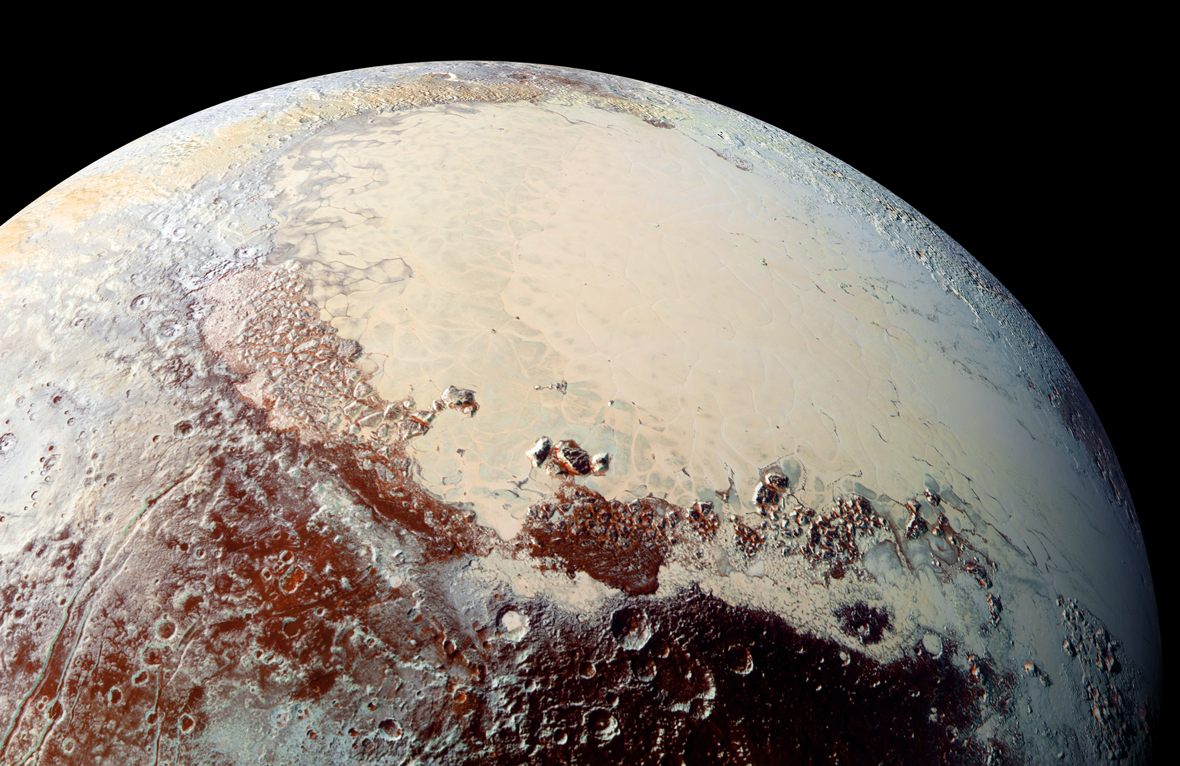On July 14th, 2015, the New Horizons spacecraft conducted the first-ever flyby of Pluto, which once was (and to many, still is) the ninth planet of the Solar System. While the encounter was brief, the stunning images and volumes of data it obtained revealed a stunningly vibrant and dynamic world. In addition to Pluto’s heart, floating ice hills, nitrogen icebergs, and nitrogen winds, the New Horizons data also hinted at the existence of an ocean beneath Pluto’s icy crust. This effectively made Pluto (and its largest moon, Charon) members of the “Ocean Worlds” club.
Almost a decade after that historic encounter, scientists are still making discoveries from New Horizons data. In a new paper, planetary scientists Alex Nguyen and Dr. Patrick McGovern used mathematical models and images to learn more about the possible ocean between Pluto’s icy surface and its silicate and metallic core. According to their analysis, they determined that Pluto’s ocean is located beneath a surface shell measuring 40 to 80 km (25 to 50 mi), an insulating layer thick enough to ensure that an interior ocean remains liquid.
Nguyen is a graduate student in Earth, environmental, and planetary sciences in Arts & Sciences at Washington University in St. Louis (WUSTL), while Dr. McGovern is a Senior Staff Scientist with the Lunar and Planetary Institute (LPI) in Houston. Their paper, “The role of Pluto’s ocean’s salinity in supporting nitrogen ice loads within the Sputnik Planitia basin,” recently appeared in the journal Icarus. The study is part of Nguyen’s Ph.D. research at Washington University, where he is an Olin Chancellor’s Fellow and a National Science Foundation Graduate Research Fellow.

For decades, planetary scientists assumed Pluto was far too cold to support an interior ocean. Pluto orbits well beyond the Solar System’s “Frost Line,” the boundary beyond which volatile elements (water, carbon dioxide, ammonia, etc.) become solid. With an average surface temperature of -229 °C (-380°F), even nitrogen and methane become as solid as rock. As Nguyen indicated in a recent interview with The Source (WUSTL’s news site), “Pluto is a small body. It should have lost almost all of its heat shortly after it was formed, so basic calculations would suggest that it’s frozen solid to its core.”
But thanks to New Horizons, scientists were presented with multiple lines of evidence that suggest Pluto likely has an interior ocean. This includes cryovolcanoes, such as those observed on Ceres, Europa, Ganymede, Enceladus, Titan, Triton, and other “Ocean Worlds.” While the existence of this ocean is still subject to debate, the theory is gaining acceptance to the point that it is considered a very real possibility. For their study, Nguyen and McGovern created mathematical models to explain the cracks and bulges in the ice covering Pluto’s Sputnik Planitia Basin.
Their results indicate that an ocean could exist beneath an icy shell 40 to 80 km (25 to 50 mi) thick, which would be sufficient to ensure that Pluto could maintain a liquid water ocean in its interior despite surface conditions. They also calculated the likely density or salinity of the ocean based on the surface features and determined that Pluto’s ocean could be up to 8% denser than Earth’s oceans. This salinity level would make Pluto’s ocean comparable to the Great Salt Lake, the Dead Sea, and other high-salinity bodies of water on Earth.
According to Nguyen, any variations in this density (greater or lower) would be evident from the cracks and fractures in the Sputnik Platina Basin. “We estimated a sort of Goldilocks zone where the density and shell thickness is just right,” he said. If the ocean were less dense, the ice shell would collapse, leading to many more fractures in the surface. If it were denser, the ice sheet would be more buoyed, which would be evident from there being fewer fractures. Unfortunately, it could be many decades before another spacecraft reaches Pluto to help confirm these findings. In the meantime, the case for Pluto’s interior ocean grows stronger!
Further Reading: Washington University at St. Louis, Icarus

